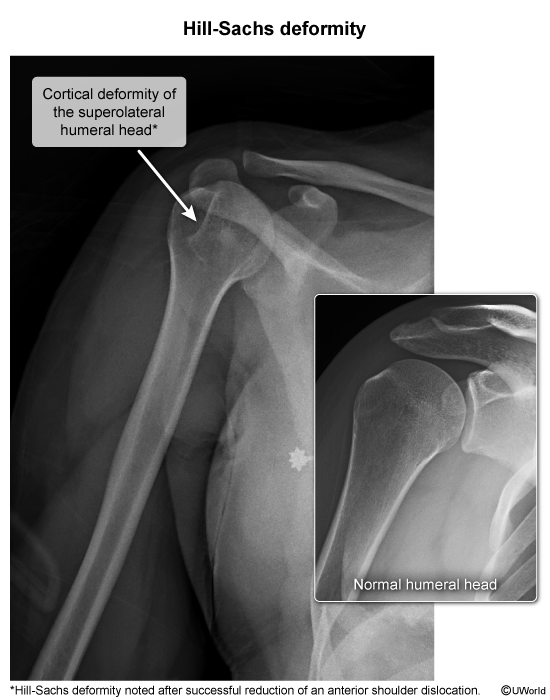Shoulder Dislocations
Article Sections
Introduction
The shoulder (glenohumeral) joint is the most commonly dislocated joint in the body. The shoulder can dislocate anteriorly, posteriorly, or inferiorly, but anterior dislocations are by far the most common. Patients have shoulder pain, decreased range of motion, and an abnormal shoulder contour. Diagnosis is confirmed with x-ray, and treatment is prompt closed reduction. Potential complications of shoulder dislocations include nerve compression (eg, axillary nerve), fractures (eg, glenoid, humerus), recurrent dislocations, and long-term joint instability.
Anatomy
The glenohumeral joint is a ball-and-socket joint. The head of the humerus forms the ball, and the glenoid cavity of the scapula forms the socket. The labrum is a fibrous ring of tissue that lines the outer rim of the glenoid to help keep the humeral head in place, and the rotator cuff muscles stabilize the shoulder joint during movements.
Continue Learning with UWorld
Get the full Shoulder Dislocations article plus rich visuals, real-world cases, and in-depth insights from medical experts, all available through the UWorld Medical Library.
Figures
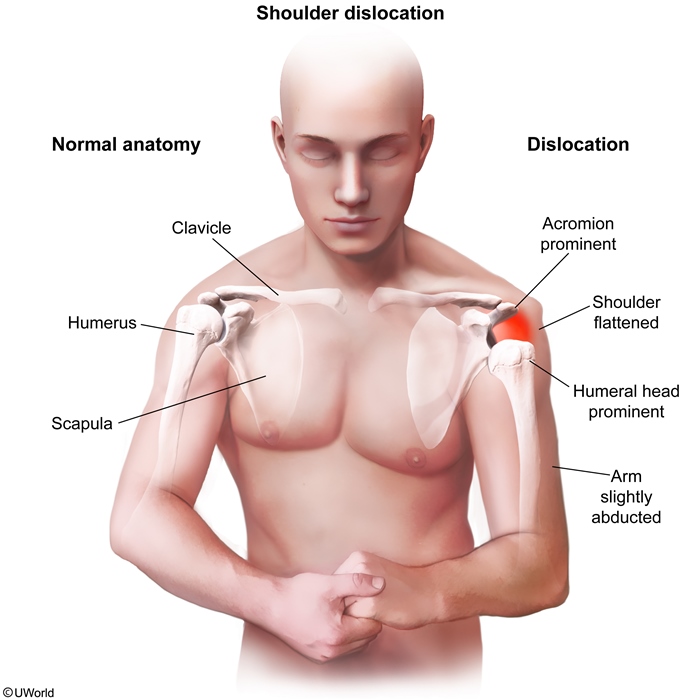
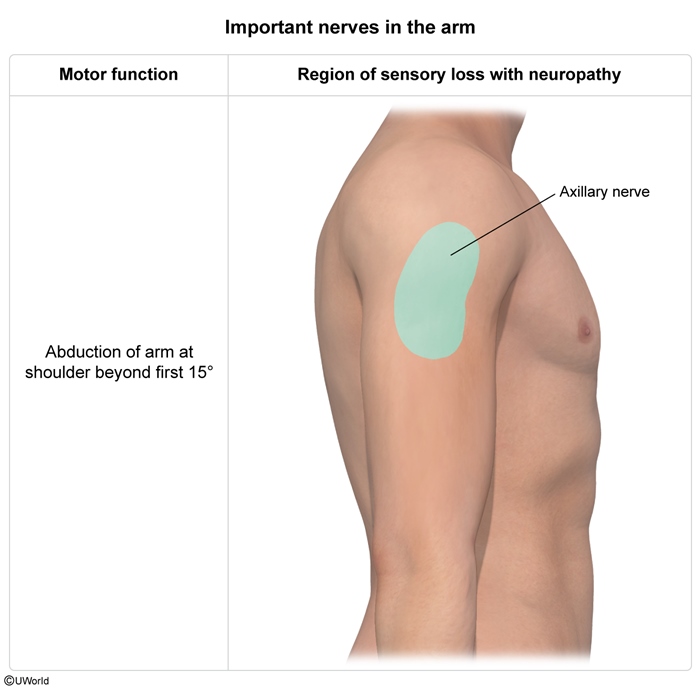
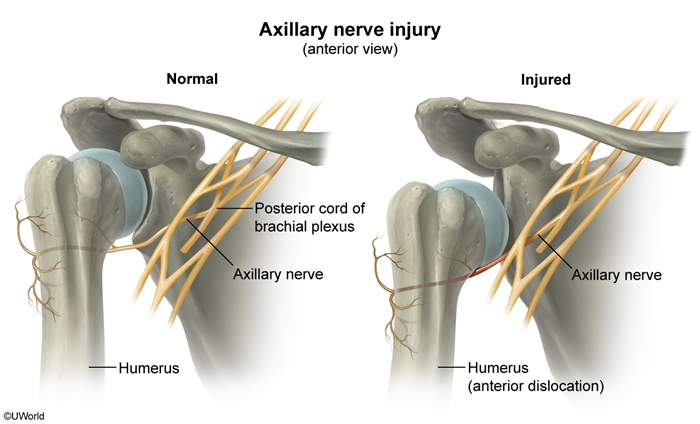
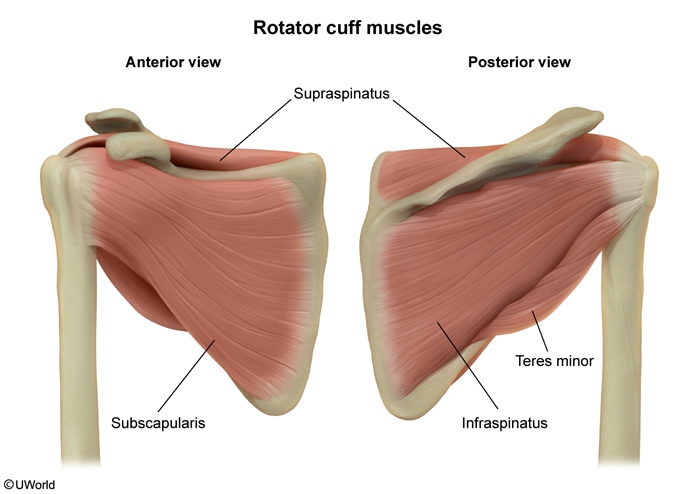
Images
